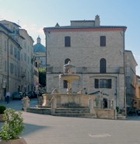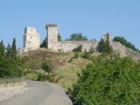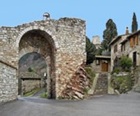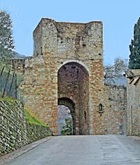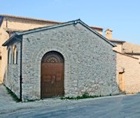

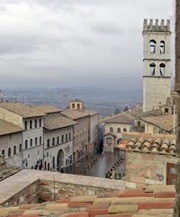
This walk begins in Piazza del Comune (illustrated above), which stands on one of the Roman terraces that runs along the hillside from west to east. This central terrace was probably built in the 2nd century BC as the forum of Asisium. The original pavement, some 5 meters below the current street level, was laid in ca. 25 AD: it can be explored in the Archeological Area that now forms part of Museo Civico (see below).
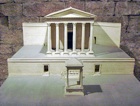
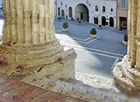
-
✴the edge of the forum and the steps that led up to the temple;
-
✴the tribune that stood between the steps (marked by two shrubs in this picture); and
-
✴the tetrastyle (in front of the palace opposite the temple).
The ex-temple now houses the church of Santa Maria sopra Minerva.
The piazza was known as the Platea Mercati (market square) by 1093. Many of the palaces that then adorned it were torn down during the popular uprising of 1198. From 1212, when the church of San Donato (which had been installed in the temple) was transferred to the Commune, the piazza became known as the Platea Comunis (the seat of the municipal government).
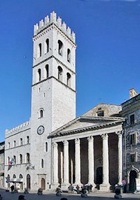
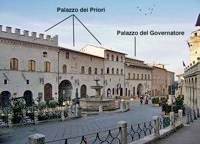
Cross the piazza diagonally to see the public palaces that were built over the following centuries:
-
✴the Palazzi dei Priori (the three palaces to the left in this illustration, which were built in succession); and
-
✴the Palazzo del Governatore, to the right of them, which is pierced by the recently-restored Volta Pinta.
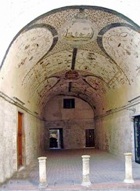
(All are described in the page on Public Palaces).

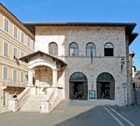
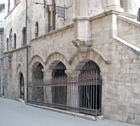

-
✴The street sign also gives the old name, Via del Ceppo della Catena: ceppi are shackles, and this must mean the ring that secured the chain (catena) that was placed across the street at night time.
-
✴The sign to the right of it, which is dated 1542, marks the boundary of the Terziero di Santa Maria (one of the three new administrative districts created in that year).
Return to the fountain and leave the piazza by Via San Rufino, to the left of it. Cardinal Antonio Barberini founded the Monte Frumentario at what is now number 10 Via San Rufino in 1633. The architrave of the door has a relief of a bee (the symbol of the Barberini) at each corner. (The establishment moved to Via San Francesco in 1746 - see Walk III). Via del Pozzo della Mensa, the road to the right here, used to lead to the well of this name in the Casa dei Canonici (see below).
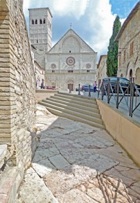
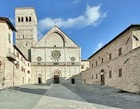
The Casa dei Canonici, which used to belong to the canons of San Rufino, is on the right. It now houses the Museo Diocesano. Via del Pozzo della Mensa, which you came across earlier in the walk, is named for the well in the canons’ cloister, which now forms part of the museum.
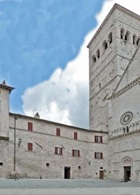

Take two short detours:
-
✴Walk a little way along Via Porta Perlici, to the left of the fountain. The house at number 9 on the left was once the hospital of the Confraternita di San Lorenzo.
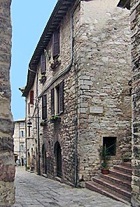
-
✴Walk a little way along Via del Torrione, which runs along the left side of of San Rufino. The ruins of what is thought to have been the Roman theatre can be seen in the garden of number 3 on the left. This used to be the site of a marble cutter’s workshop, and there is evidenceof his art on the right.
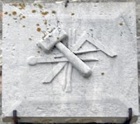
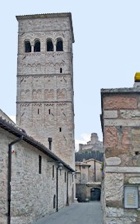
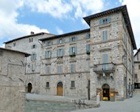
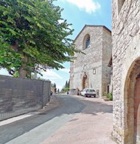
Take a detour by walking back a little way along Via delle Rose and turning right down the stepped Vicolo della Fortezza. The retaining wall on the right contains the remains of the aqueduct that Brother Giovanni da Penna built in 1238 to bring water to San Francesco.
Return to Santa Maria delle Rose and turn right along the left side of the church and right again along Via Joergensen. This street is named for the Danish poet, Johannes Jørgensen, who wrote a biography of St Francis in 1907 and subsequently received honorary citizenship of Assisi. This street leads to the ex-Oratorio di San Lorenzo (later Villa Berkley).
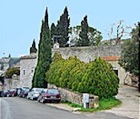
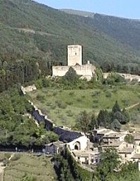
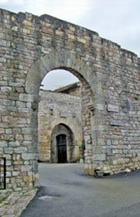
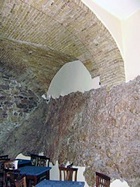
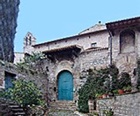
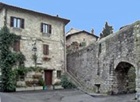

Take the second turn on the right into Piazza Matteotti and turn left, leaving the piazza by Via Eremo delle Carceri, passing the ex-church and nunnery of Santa Caterina on the left (now Relais Nun). Recent excavations (completed in 2010) have brought to light remains from the amphitheatre here, and these are now incorporated into the hotel spa.
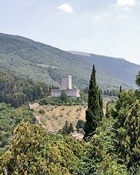
It is possible to continue from end of this path to the Eremo delle Carceri, but this involves a strenuous hike of some 4 km and a climb of about 250 meters along a signed but rocky path. The hermitage can also be visited in the car journey described in “Around Assisi”.
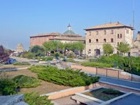
-
✴The boarding school known as the Convitto Nazionale di Assisi (1940), which dominates the long side of the piazza. According to Enrico Sciamanna (referenced below, at p. 139), the remains of a number of graves in a Roman necropolis that was in use for about 400 years from the 2nd century BC were found during the construction of the school and the subsequent construction of the nearby car park. A Roman inscription (CIL XI 5407, now in the Museo Civico), which was probably found here, seems to relate to the Roman mausoleum at the corner of Piazza Matteotti and Via Torrione (below).
-
✴The neo-Gothic Casa Assunti (1918-26) at number 5 on the far side of the piazza incorporates the remains of a monumental entrance to the city that had been discovered nearby shortly before the house was built. The huge base of a Roman column in its courtyard to the right of the tree in this photograph) was one of four that were discovered in nearby Vicolo Bovi at this time that probably came from a loggia that led from the city gate to the acropolis.
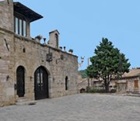
-
✴The remains of a Roman mausoleum can be seen further to the left, at the corner of Via del Torrione.
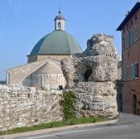
Walk down the steps to the underground car park in Piazza Matteotti and follow the signs to the centre. This takes you
-
✴through the Roman tunnel that once linked the terrace that is now Piazza San Rufino to the amphitheatre; and
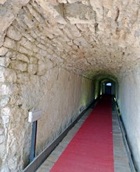
-
✴around the garden of San Rufino, with a fine view of its dome and its apse.
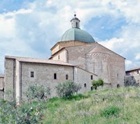
A flight of steps then leads down to Via San Gabriele Addolorata. Turn right and continue to Piazza del Comune, where the walk ends.
Read more:
E. Sciamanna, “Asisium: Percorsi Archeologici nel più Importante Municipio Romano a Nord di Roma”, (2008) Assisi
Return to Walks in Assisi.
Return to the home page on Assisi.
